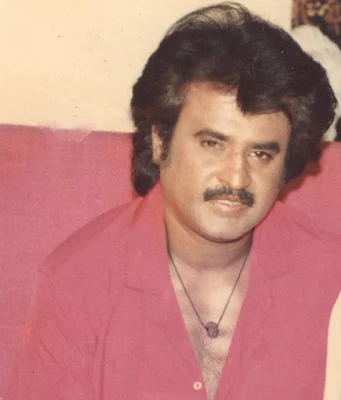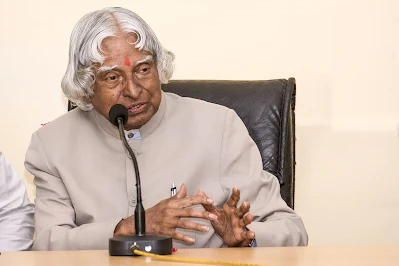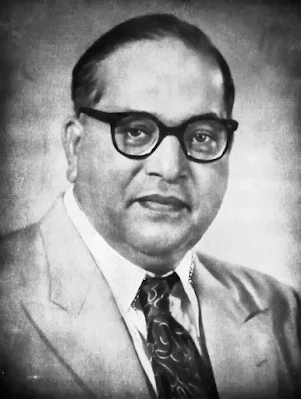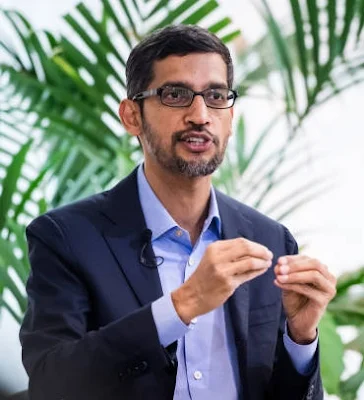5 Must-Read Success Stories Of Indian Famous People.
5 Best Stories of Indian most successful people you must read to keep motivating and pushing toward the goal to yourself.
“Struggle Of Rajnikant From Police Constable To India's Biggest Superstar.”
1. Success Story & Biography Of Rajnikant.
Superstar Rajinikanth is way more than just an actor – he is almost considered as a God especially when it comes to his huge fan following down South.
| Rajinikanth was born Shivaji Rao Gaikwad on December 12, 1950, in a Marathi family in Bangalore. He was named after the Maratha warrior, Chhatrapati Shivaji. Rajinikanth was the fourth child of Jijabai and Ramojirao Gaekwad, who was a police constable. In the initial years of his childhood and youth, he struggled a lot due to financial issues. Though he came from a Marathi background, Rajinikanth has not acted in any Marathi films as yet. |
“How Poor Background Boy Become Missile Man.”
2. Success Story & Biography Of A. P. J. Abdul Kalam
A.P.J Abdul Kalam (15th October 1931- 27 July 2015) was born in Rameswaram into a Tamil Muslim family in Tamil Nadu itself. He came from a humble background where his father, a boat owner, and mother, a housewife brought him up. He used to distribute newspapers after the completion of his school so that he could support his father. What he had was a yearning to learn more. He was in Ramanathapuram Schwartz Matriculation School and later he went to Saint Joseph’s College from where he became a physics graduate. In 1955 he went to Madras to pursue his studies further in Madras.
A.P.J Abdul Kalam won the election of President in 2002 by surpassing mammoth votes. His term as President was from 25 July 2002 to 25 July 2007. He was backed by the parties of the National Congress and the Samajwadi Party. It was an easy victory for him and he became the 11th President of India. He received the highest civilian honor Bharat Ratna and was the third person to do so. Occupying the seat of Rashtrapati Bhavan he was indeed the first bachelor and the first scientist as well. However, in 2012 he declined for the role of President for the second term. After retiring from the post of scientific adviser in 1999, his main mission was to interact with as many as 100,000 students. He felt the joy in meeting with the youth of the country particularly the high school students. He found a way to ignite their mind for the development of India.
He was delivering a lecture on 27th July 2015 at IIM Shillong where at 6:30 pm he suffered a heart attack massively and critically his condition was, he was shifted to Bethany Hospital where thereafter, he died of cardiac arrest.
“The Journey From Born In Dalits Society To Receiving the highest civilian award of the Republic of India.”
3. Success Story & Biography Of Bharat Ratna Dr. B. R. Ambedkar.
Dr. B.R. Ambedkar is viewed as a messiah of Dalits and the downtrodden in India. He was the chairman of the drafting committee that was constituted by the Constituent Assembly in 1947 to draft a constitution for independent India. He played a seminal role in the framing of the constitution. Bhimrao Ambedkar was also the first Law Minister of India. For his yeoman service to the nation, B.R. Ambedkar was bestowed with Bharat Ratna in 1990. Dr.Bhimrao Ambedkar was born on April 14, 1891, in Mhow (presently in Madhya Pradesh). He was the fourteenth child of Ramji and Bhimabai Sakpal Ambedkar. B.R. Ambedkar belonged to the "untouchable" Mahar Caste. His father and grandfather served in the British Army. In those days, the government ensured that all the army personnel and their children were educated and ran special schools for this purpose. This ensured good education for Bhimrao Ambedkar, which would have otherwise been denied to him by the virtue of his caste.
The Maharaja of Baroda appointed Dr. Ambedkar as his political secretary. But no one would take orders from him because he was a Mahar. Bhimrao Ambedkar returned to Bombay in November 1917. With the help of Shahu Maharaj of Kolhapur, a sympathizer of the cause for the upliftment of the depressed classes, he started a fortnightly newspaper, the "Mooknayak" (Dumb Hero) on January 31, 1920. The Maharaja also convened many meetings and conferences of the "untouchables" which Bhimrao addressed. In September 1920, after accumulating sufficient funds, Ambedkar went back to London to complete his studies. He became a barrister and got a Doctorate in science.
After completing his studies in London, Ambedkar returned to India. In July 1924, he founded the Bahishkrit Hitkaraini Sabha (Outcastes Welfare Association). The Sabha aimed to uplift the downtrodden socially and politically and bring them to the level of the others in the Indian society. In 1927, he led the Mahad March at the Chowder Tank at Colaba, near Bombay, to give the untouchables the right to draw water from the public tank where he burnt copies of the 'Manusmriti' publicly.
In 1929, Ambedkar made the controversial decision to co-operate with the all-British Simon Commission which was to look into setting up a responsible Indian Government in India. Congress decided to boycott the Commission and drafted its version of a constitution for free India. The Congress version had no provisions for the depressed classes. Ambedkar became more skeptical of Congress's commitment to safeguarding the rights of the depressed classes.
When a separate electorate was announced for the depressed classes under Ramsay McDonald's' Communal Award', Gandhiji went on a fast unto death against this decision. Leaders rushed to Dr. Ambedkar to drop his demand. On September 24, 1932, Dr. Ambedkar and Gandhiji reached an understanding, which became the famous Poona Pact. According to the pact the separate electorate demand was replaced with special concessions like reserved seats in the regional legislative assemblies and Central Council of States. Dr. Ambedkar attended all the three Round Table Conferences in London and forcefully argued for the welfare of the "untouchables". Meanwhile, the British Government decided to hold provincial elections in 1937. Dr. B.R. Ambedkar set up the "Independent Labor Party" in August 1936 to contest the elections in the Bombay province. He and many candidates of his party were elected to the Bombay Legislative Assembly.
In 1937, Dr. Ambedkar introduced a Bill to abolish the "khoti" system of land tenure in the Konkan region, the serfdom of agricultural tenants, and the Mahar "watan" system of working for the Government as slaves. A clause of an agrarian bill referred to the depressed classes as "Harijans," or people of God. Bhimrao was strongly opposed to this title for the untouchables. He argued that if the "untouchables" were people of God then all others would be people of monsters. He was against any such reference. But the Indian National Congress succeeded in introducing the term Harijan. Ambedkar felt bitter that they could not have any say in what they were called.
In October 1948, Dr. Ambedkar submitted the Hindu Code Bill to the Constituent Assembly in an attempt to codify the Hindu law. The Bill caused great divisions even in the Congress party. Consideration for the bill was postponed to September 1951. When the Bill was taken up it was truncated. A dejected Ambedkar relinquished his position as Law Minister.
On May 24, 1956, on the occasion of Buddha Jayanti, he declared in Bombay, that he would adopt Buddhism in October. On 0ctober 14, 1956 he embraced Buddhism along with many of his followers. On December 6, 1956, Baba Saheb Dr. B.R. Ambedkar died peacefully in his sleep.
“The Journey Of Becoming India's Biggest Business Tycoon.”
4. Success Story & Biography Of Ratan Tata.
If you do what you’ve always done, you’ll get what you’ve always had. Think differently. The same can be said about the success of Ratan Naval Tata, one of the greatest Indian businessmen of India.
“How A Lower Middle-Class Boy Become The C.E.O. Of Google.”
5. Success Story & Biography Of Sundar Pichai.
Google surprised the world by announcing the appointment of a new CEO on 10th August 2015. It became a proud moment for the Indian community to see an Indian-born make it to the list of the CEOs in the Tech. Industry. Sundar Pichai, a name now well-known across the globe has had his share of struggles before making it to the top.
Pichai Sundararajan, more commonly known to us as Sundar Pichai was born in Madurai, in the state of Tamil Nadu, India, on July 12, 1972. He belongs to a lower-middle-class family and had never experienced the luxury of watching television or traveling by car in his childhood. His father Raghunath Pichai worked as an Electrical Engineer in General Electric in Chennai and therefore, the family lived in the city, at Ashok Nagar. His father was the manager of a factory that made components for electrical objects. The stories of the work challenges faced by his father always inspired Pichai. His mother, Lakshmi, was a Stenographer until she gave birth to her kids. Sundar has a younger brother as well.
Pichai saw technology in his hands at the age of 12 when his father bought a landline phone for the house. He had the extraordinary skill of memorizing and remembering numbers. He could keep in mind all the numbers he dialed. Pichai was not only good with numbers whilst at school but also the captain of his high school cricket team. Sundar completed his Class X at Jawahar Vidyalaya, at Ashok Nagar, and completed Class 12 from Vana Vani school at Chennai. Pichai then graduated in Metallurgical Engineering from IIT Kharagpur. He completed his MS (Masters in Science) in Material sciences and Engineering from Stanford University and later went on to complete an MBA from the Wharton School at the University of Pennsylvania.
Sundar Pichai worked for McKinsey & Company in management consulting during his pre-Google days. He also contributed his talents in engineering and product management at Applied Materials. Pichai joined Google in 2004 and is known to have worked on popular products like Toolbar. He also has worked on other products Google Gears and Google Pack, before Chrome was launched. However, the success of the Toolbar helped Pichai pace his career. Google noticed that the toolbar increased the user searches. This eventually led to the start of Google Chrome; Google’s very own browser.
Pichai has led product management and also found Google’s client software products such as Google Chrome and Chrome OS. Pichai is the man responsible for driving Google’s Chrome OS and browser to the fore. He was appointed as VP of product development in 2008. He introduced the Chrome browser to the world. Soon it was followed by Chrome OS in 2009. Pichai came more into the public limelight at Google presentations from 2008 and very soon became a well-known face of Google. He was the Senior VP of Chrome and apps by 2012.
It was in 2013 that Pichai became a well-known personality worldwide. He stepped into the shoes of Andy Rubin as the overseer of all Android-related products, almost after a decade at Google. In 2015, Sundar was announced to be the new CEO of Google as their well-known leader, Larry Page was retiring from Google to take up the reigns at Alphabet, Inc. their new holding company. Earlier that year, he was announced to be the Product Chief at Google by Larry Page himself.
He was also a running contender for the post of Microsoft's new CEO, a job that ultimately went to Satya Nadella.
Story Source:- Success Stories of Great People apk ( Hari Krishna App Play Store )
















